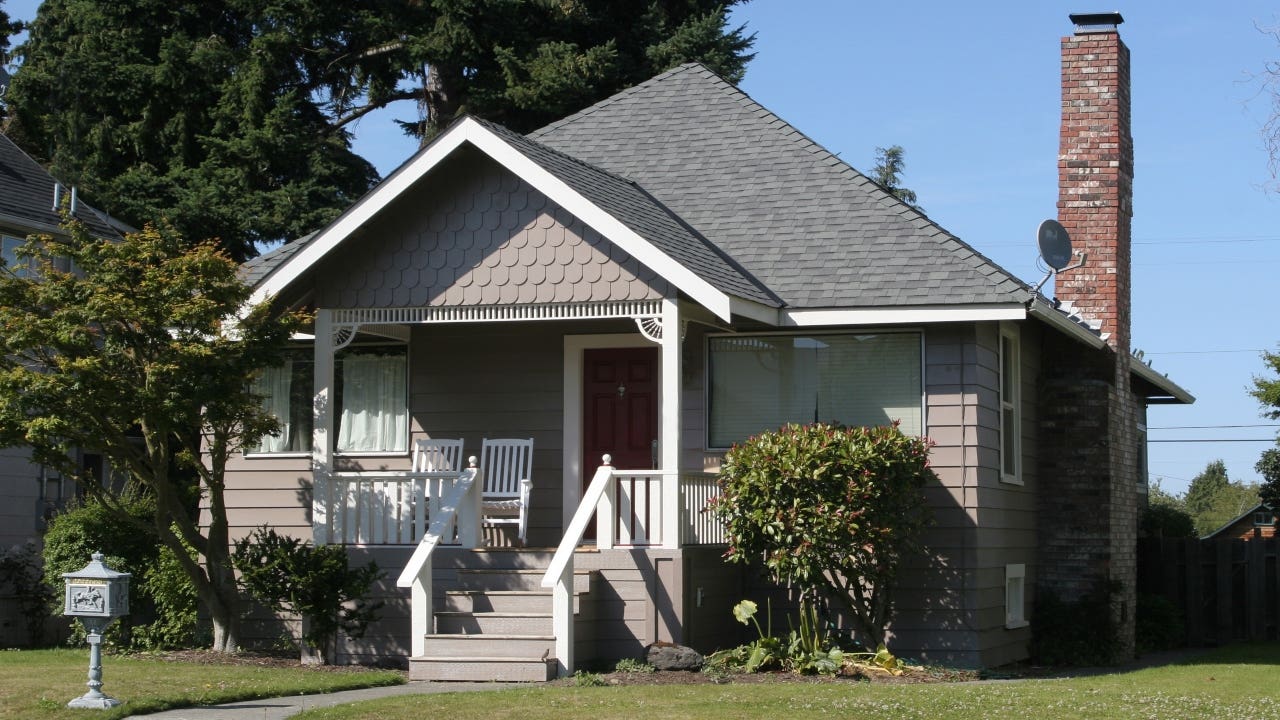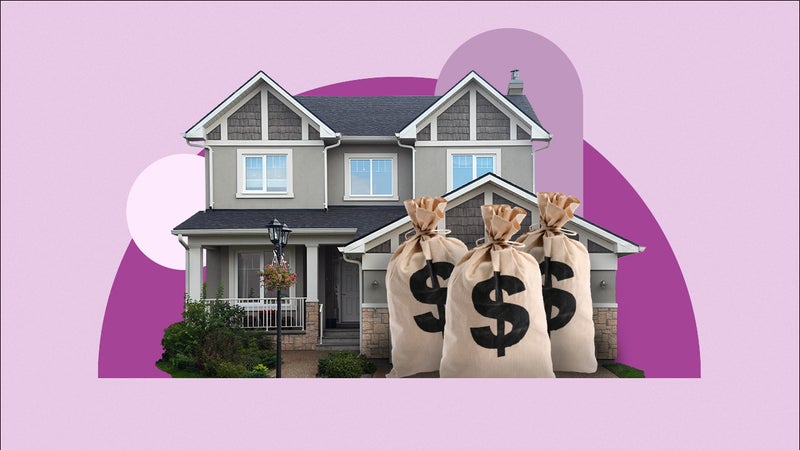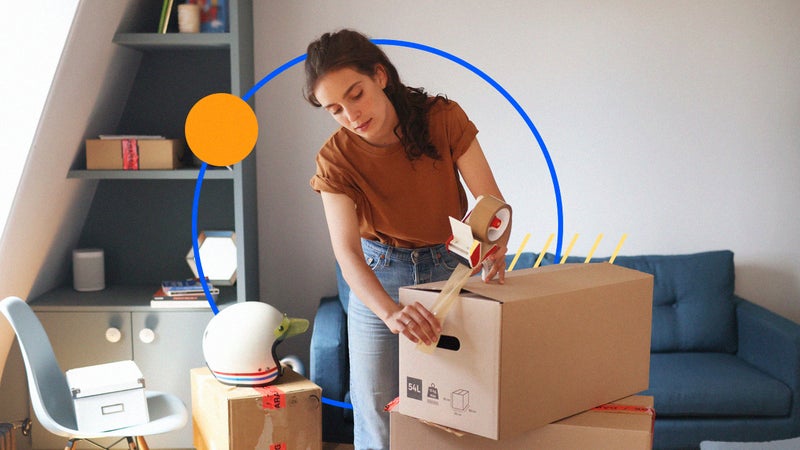Average down payment on a house

The Bankrate promise
At Bankrate we strive to help you make smarter financial decisions. While we adhere to strict , this post may contain references to products from our partners. Here's an explanation for .
Key takeaways
- The median down payment on a home in the U.S. in Q1 2024 was $26,700 — about 8% of the median home purchase price at that time.
- The minimum down payment needed for a mortgage depends on the cost of the home and the type of mortgage.
- The most common ways to fund a down payment include saving, using gifts or assistance, or borrowing from retirement accounts or selling investments.
You might have heard you’ll need a 20 percent down payment to buy a home. While there’s a reason that number seems standard, 20 percent isn’t set in stone. Many mortgages require borrowers to put down as little as 3 or 3.5 percent, and some loans don’t have minimums at all.
Here’s an overview of the numbers for down payments.
$60,202
Source: ATTOM
What is the average down payment on a house?
The median sale price of a home in the U.S. in Q1 2024 was $335,500 according to real estate data provider ATTOM. During that same period, the median down payment was $26,700, or only 8 percent of the median home price.
Other data suggests a higher percentage, though. In its “2024 Home Buyers and Sellers Generational Trends” report, the National Association of Realtors (NAR) found the median down payment among all buyers (some 6,817 new homeowners) to be 15 percent. That tallies with ATTOM’s monthly “United States Real Estate Overview,” which for May 2024 puts the national median home sales price at $384,375 and the median down payment at $60,202, or 15.6 percent.
As home prices have risen, so have loan amounts: in the first quarter of 2024, the median mortgage on a single family home was $329,800, up over 7 percent year-over year, according to ATTOM. Conversely, down payments in relation to mortgage sizes have declined: The $26,700 in Q1 2024 has dropped nearly 21 percent from $33,750 in Q4 2023.
In step with the housing market, the typical down payment has changed over time based on home prices, mortgage rates and other factors. Looking back to 2005, the lowest median down payment between now and then was a mere $1,000 in the fourth quarter of 2006.
Down payments by state
Just as home prices vary widely across the U.S., down payment amounts vary by location. The higher down payments tend to be concentrated in higher-cost states like California, Hawaii, Massachusetts and Washington.
Average down payment by generation
In general, the younger a buyer is, the more likely they are to make a smaller down payment.
| Age group | Median down payment percentage |
|---|---|
| Source: National Association of Realtors | |
| Homebuyers aged 25-33 | 10% |
| Homebuyers aged 34-43 | 13% |
| Homebuyers aged 44-58 | 15% |
| Homebuyers aged 59-68 | 22% |
| Homebuyers aged 69-77 | 35% |
| Homebuyers aged 78-98 | 29% |
Down payments and different mortgage types
The minimum amount you’ll need for a down payment depends on the cost of the home and what type of mortgage you get. The minimum requirements range from no down payment at all to 5 percent. Here’s an overview:
| Loan type | Minimum down payment |
|---|---|
| Conventional loan (Conforming) | 3% |
| Adjustable-rate loan (Conforming) | 5% |
| FHA loan | 3.5% |
| VA loan | None |
| USDA loan | None |
Many borrowers put down more than the minimum, either through savings, gifts or down payment assistance. In fact, 14 percent of current homeowners used a financial gift from family and friends for a down payment for their first home, while another 14 percent used an assistance loan or program for first-time buyers, according to Bankrate’s recent Down Payment Survey.
The more you put down, the less you’ll need to borrow and the less you’ll pay in interest. You’re also more likely to get a better interest rate on your mortgage. A bigger down payment also translates to more equity in the home to start — a tappable asset, as well as a potential safeguard against any declines in home values. If you’re getting a conventional or FHA loan and can put down at least 20 percent, you’ll also avoid the requirement to buy mortgage insurance, an extra expense on top of your monthly mortgage payment.
That said, there is a case to be made for a smaller down payment, even if it means paying mortgage insurance. If you’ve been renting for a while and have limited savings, pulling together at least the minimum down payment might be preferable to continuing to rent, especially if your housing needs have changed. Buying a home sooner rather than later also moves you quicker into wealth-building territory, acquiring as an asset you can pass down to future generations.
Down payment examples
We’ve done the math to help you estimate your down payment at various price points.
| Home price | 3% down | 3.5% down | 10% down | 20% down |
|---|---|---|---|---|
| $200,000 | $6,000 | $7,000 | $20,000 | $40,000 |
| $300,000 | $9,000 | $10,500 | $30,000 | $60,000 |
| $400,000 | $12,000 | $14,000 | $40,000 | $80,000 |
| $500,000 | $15,000 | $17,500 | $50,000 | $100,000 |
| $600,000 | $18,000 | $21,000 | $60,000 | $120,000 |
| $700,000 | $21,000 | $24,500 | $70,000 | $140,000 |
| $800,000 | $24,000 | $28,000 | $80,000 | $160,000 |
| $900,000 | $27,000 | $31,500 | $90,000 | $180,000 |
| $1 million | $30,000 | $35,000 | $100,000 | $200,000 |
FAQ
-
As of 2023, the typical mortgage down payment for a first-time homebuyer was 8 percent, while the typical down payment for a repeat homebuyer was 19 percent, according to the National Association of Realtors.
-
If you’re putting down less than 20 percent on a conventional loan, you won’t be able to completely avoid private mortgage insurance (PMI). A few mortgage lenders offer “no-PMI” mortgages. While you won’t have to pay for PMI with these types of loans, you will pay a higher interest rate, which could end up costing you more over time than the insurance premiums.
Another possible solution: a piggyback mortgage. You’ll finance 80 percent of the home’s price with one mortgage, take out a second mortgage for 10 percent, and then come up with the remaining 10 percent in cash. That second mortgage, plus your 10 percent contribution, in effect gives you a 20 percent down payment — so you avoid PMI.
If you’re a first-time homebuyer, you might get a break on PMI anyway. Many first-time buyer programs come with reduced premiums. -
The most common ways to fund a down payment include saving, using a gift from relatives or friends or getting a grant or some other form of assistance.Some buyers borrow or withdraw funds from retirement accounts or sell investments. However you get your funds, just be sure to have them in your bank account for a minimum of two months’ prior to applying for a mortgage. If not, you’ll likely need to provide extra documentation to prove where the money came from.Learn more: How to save for a down payment
Additional reporting by Maya Dollarhide


